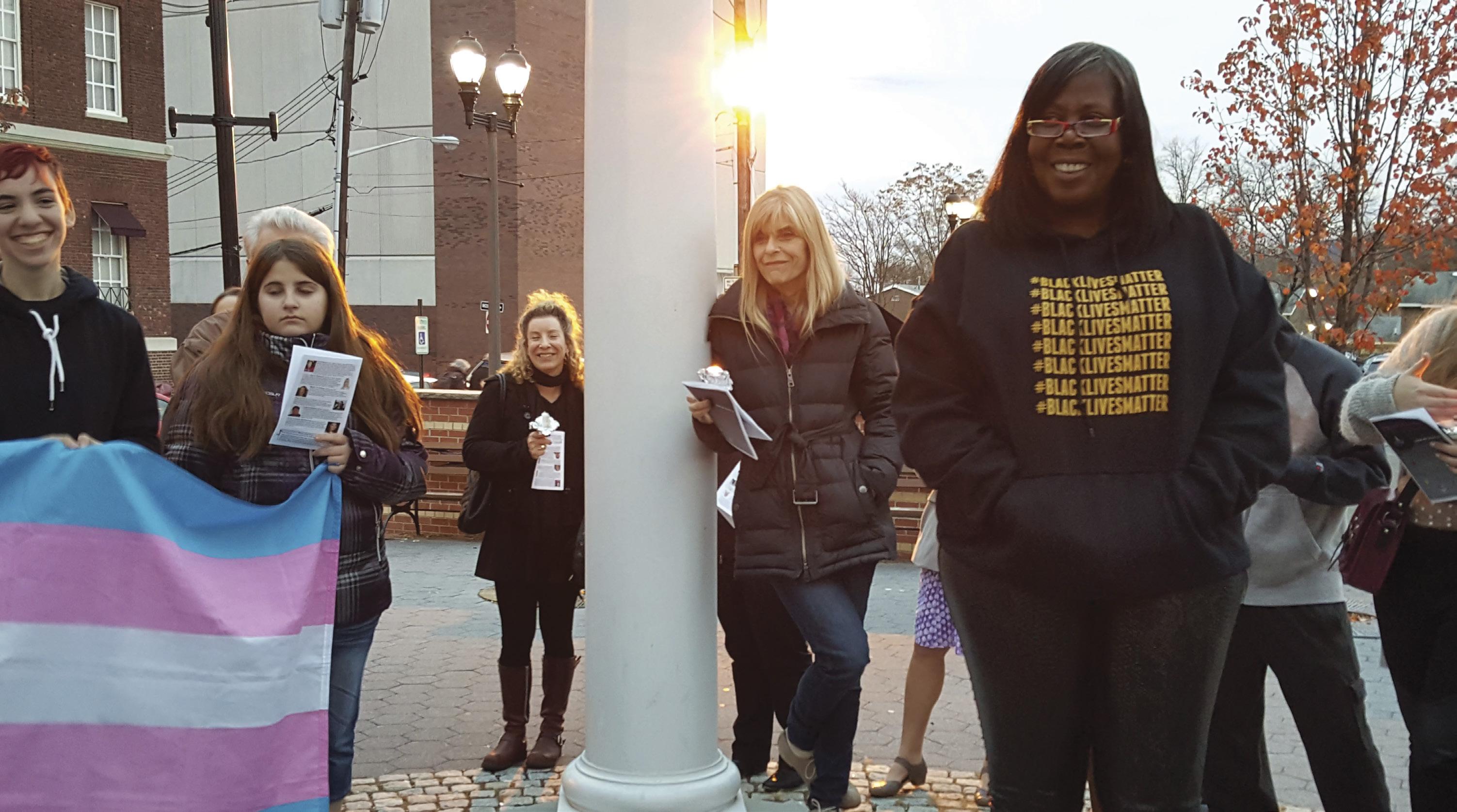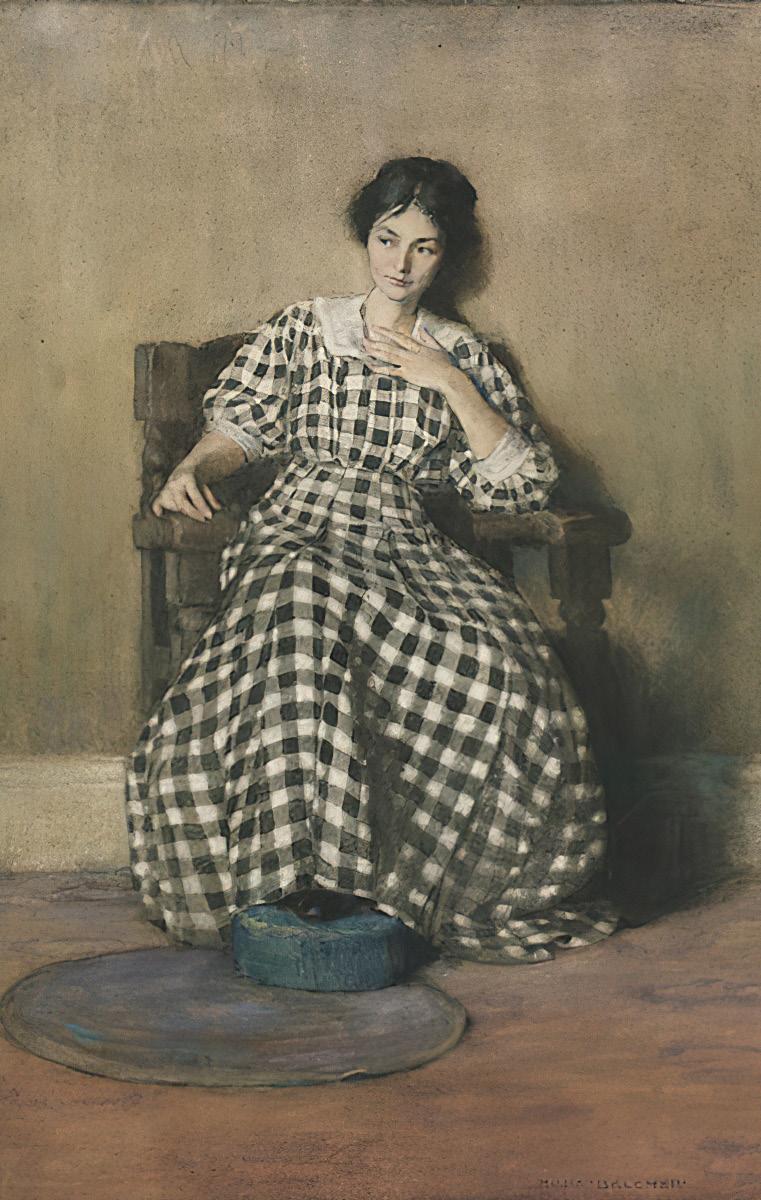
12 minute read
Call BlackLine
Vanessa Green at the 2018 Black Women’s March: Continuing the Legacy of Harriet Tubman at the Tappan Zee/Gov. Mario M. Cuomo Bridge in Tarrytown.
Community Care and Liberation on Speed Dial
Advertisement
BY TIANA HEADLEY
A collaboration with
The summer of 2020 jolted America out of a complacent slumber. George Floyd didn’t walk into a Minneapolis convenience store foreseeing his death, but his lynching reminded many Americans of the precarity of Black life when confronted with maximum-force policing. It only took a 911 call over Floyd’s alleged counterfeit $20 bill to seal his death by Minneapolis police.
Grotesque public killings like Floyd’s disturb the conscience of many. But for Black people, they’re also routine reminders of what often happens when they encounter police: harassment, or worse, death. 2020 saw newfound enthusiasm for mutual aid networks and community-based public safety systems amid the twin threats of the pandemic and law enforcement. But communities adversely impacted by American institutions have used this model for years, with an awareness that working together better ensures their survival. Existing systems will not meet their needs; instead, they often create and exacerbate them.
Police are more likely to shoot and kill unarmed Black men presenting signs of mental illness, compared to white men showing similar behavior, according to a UC Berkeley School of Public Health study. (2020 provided a harrowing example in Rochester, where Daniel Purdue died by asphyxiation in late March after police pressed his head and naked body into the ground. The 41-yearold was suffering a mental breakdown intensified by drug abuse. Purdue’s brother had made the 911 call.)
Six years ago, the litany of police killings catalyzed Vanessa Green and other Black Lives Matter Hudson Valley organizers to brainstorm ways to reduce Black people’s contact with the police. What if they were their own first responders? “We asked, what would a hotline for Black people look like?” Green says. “What would it look
like for us to respond in our own community that we know and love?” Green and other organizers began by tackling mental health crises in the Black community, starting a rapid response team to reduce such deaths in their neighborhoods. “We knew that if you called the police on somebody in a mental health crisis and they’re Black, they could die,” says Green.
At first, they focused on Newburgh, where 24.5 percent of residents are Black. Green and others she’d trained in crisis intervention made house calls to de-escalate situations.
Sometimes they got callers from outside the city and state. When they couldn’t make those housecalls, they’d steer callers to other resources. But it soon became clear that they should nationalize their work. In 2016, they shifted gears, retiring their in-person response initiative to focus solely on phone calls and texts nationally. That’s when they became Call BlackLine, a 24/7 hotline that helps BIPOC navigate the struggles, abuse, and harassment they face in America.
Bearing Witness to Black Pain
Call BlackLine is part crisis line, part warmline. While some callers need immediate counseling, others just need a friendly ear to share dayto-day highs and lows. Still others might need emotional support in their distress or may be on the brink of crisis.
The organization answered 1,016 calls between January and August last year, ranging from Black students facing racism at school to people living with schizophrenia searching for a daily constant in their lives. Green says more people are calling about COVID-related stressors amid the pandemic. “I’ve got moms with kids at home who just need to talk to anybody because they’ve been isolated,” she says.
January has been another recent major flashpoint for the hotline, after Congress certified Joe Biden’s election victory and a pro-Trump mob stormed the US Capitol. “All day the phone’s ringing off the hook,” Green says.
Through an LGBTQ+ Black femme lens, the hotline embraces and affirms even the most marginalized within BIPOC communities. Green and the team of 10 volunteers, most Black, queer, and/or differently abled themselves, connect with callers through their shared experiences with racism, violence, and other forms of oppression. Transphobia and other bigotry aren’t tolerated by callers either. “Our philosophy is, that’s how we get free—when we start lifting up our trans sisters,” Green says.
Those lived experiences also inform the training volunteers undergo and the protocols they employ with suicidal ideation and mental health crises. Major hotlines like the US National Suicide Prevention Lifeline have come under fire for tracing and routing callers’ locations to local police departments without their consent. Some are harassed by police and forcibly hospitalized. For BIPOC, LGBTQ folks, and sex workers, these interactions can be fatal. For that reason, Call BlackLine doesn’t call the police.
Instead, the team connects callers to regional therapists, psychiatrists, homeless shelters, and other resources as needed. Many are Black or Black-led, and all are vetted by Green and a national network of other racial justice and Black Lives Matter organizers, with approval based on Black women and femmes’ past experiences with the resource.
Green herself does not have a therapist’s license, and she says that the hotline’s legitimacy has been criticized since Call BlackLine was founded. But neither she nor other team members present themselves as therapists, and callers in acute need are connected to help. She addressed that criticism in a prior interview: “We don’t need licensing because we’ve been doing counseling in our communities since you trafficked us here.”
—Vanessa Green, Call BlackLine founder
A Solution for a Pervasive Problem
The hotline fills another niche in BIPOC community care: It’s a place to report brushes with consumer discrimination, negative police interactions, and racist vigilantism.
“In the hopes of changing the way our communities are policed, we hope to speak to people who have had negative experiences with law enforcement or vigilantes,” Call BlackLine’s website states. “We want to help build a new network of support that our community can rely on.”
For many Black folks, reporting police harassment to the local department can be daunting because of the fear of retaliation. Raising red flags about white racist vigilantism to local law enforcement can also be futile, as they often fumble their response, enable the activity, or even cheer it on. Police departments have failed to crack down on this activity despite the Department of Homeland Security naming white supremacist extremists “the most persistent and lethal threat in the homeland” in a 2020 report, and warning about the current rise of right-wing extremism as far back as 2009.
The threat is not foreign to the Hudson Valley, even if it hasn’t risen to widespread ideological violence. According to the Hudson Valley AntiFascist Network (HVAN), Patriot Front is the main white nationalist group recruiting in the region, primarily through flyering and stickering. John, an organizer with HVAN who prefers to remain anonymous, says Patriot Front’s activity has declined after HVAN doxxed its regional director, who fled Poughkeepsie soon after. But that hasn’t stopped other local white supremacist groups from attempting to make their presence felt: In December, the neo-fascist group Proud Boys threatened a Putnam for Black Lives food drive led by BIPOC high schoolers.
As for vigilantism, John says individual activity that HVAN has monitored pales in comparison to last summer’s counterprotest against a Rally for Black Lives in Pleasant Valley, when “Back the Blue” counterprotesters hurled slurs, punches, slaps, and spit at rally attendees. “It was so shocking because it was so unprecedented for this area. It seemed almost like Charlottesville that day,” John says.
Only one arrest for disorderly conduct was made by New York State Police, after two months of public pressure. An early analysis of the event by the Dutchess County Sheriff’s Office found that “a small group on both sides” were violent. Since those preliminary findings, Captain John Watterson of the Dutchess County Sheriff’s Office says, “No new information has surfaced, no evidence of misconduct has been discovered, and no charges have been filed.”
Green says Call BlackLine doesn’t receive many calls about vigilantism, but that isn’t to say it’s not happening. Most of the calls they do get are about activity that feels threatening but doesn’t quite cross the line: White neighbors looking through a Black neighbor’s window or trailing them by car. And long after Black codes and Jim Crow, national store chains and small business retailers still perpetuate the “Shopping While Black” phenomenon. Green hopes to help BIPOC navigate this reality by developing an app to document these experiences.
This isn’t criminal behavior per se, so police might chalk it up to unfounded paranoia. But in a country known for gaslighting Black people about their pain and trauma, the hotline is an alternative safe place where these experiences are affirmed.
Cataloguing those experiences can also provide a clearer picture of the problem, and help Call BlackLine quantify its impact. A Vassar College student is creating a database of these reported incidents and other call data that, when complete, Call BlackLine will draw from to bolster grant applications that will allow the organization to pay volunteers.
The Road to a Social Justice Framework
Despite Call BlackLine’s social justice mission, Green hasn’t always had a social justice worldview. Her 31-year career in the social work, human services, and nonprofit sectors slowly but surely radicalized her.
Green can attest to how social services— particularly foster care—can be inherently oppressive for communities of color and the poor. During her 11-year stint at Pius XII Youth and Family Services in Orange County, the overflow of Black and Latinx families in her caseloads disturbed her. “‘Why are there so many Black and brown people in the system?’” she remembers thinking. “And then I realized it’s because they’re Black, they’re brown, and they’re poor.”
Green says that the foster care system—or family policing, as she calls it—holds Black and brown families to oppressive standards.
Instead of helping families in hard times, the system punishes them. “We know that poverty is one of the root causes of kids being hungry, moms being on the streets, moms prostituting themselves, [and] doing whatever they need to do to survive,” she says.
Green did everything in her power to keep families together. But if that wasn’t possible, she made sure they kept in touch. “There’s no such thing as adoption being private with a Black child. These kids need to know where they come from,” she says.
A year after Pius XII’s office closed in 2000, Green joined the Mental Health Association of Orange County to direct rape crisis services, where she witnessed more failures by local government to protect victims.
For one thing, Green says police involvement often did more harm than good. At one point, St. Luke’s Cornwall Hospital had a policy of calling Newburgh police when they admitted rape victims. Green believes this policy ultimately got one person killed by her attacker, who thought the woman had snitched to police. Through meetings and relationship-building with staff, Green got the hospital to retract its policy. “‘You just killed her,’” she remembers telling St. Luke’s staff. “It’s about giving a woman autonomy. You let the victim decide if they want to report their rape.”
Year after year, Green’s supervisors at the Mental Health Association couldn’t keep up with her visions for reform. “They told me, ‘You’re moving too fast. I’m scared,’” she says.
Green was also working part-time for the mental health, family counseling, and advocacy nonprofit VCS, gaining the social justice acumen she’d use to attempt to reform mental health response in Orange County. Black women and girls are at disproportionate risk of sexual violence, but are less likely to report rape compared to white women. When Green did targeted outreach for Black women and other women of color, she was met with resistance from her supervisors. Feeling unsupported, she left the Mental Health Association in 2006 to work full-time for VCS.
Green had her ups and downs with the trailblazing social justice nonprofit, as well. On one hand, she gained invaluable knowledge of institutional oppression through her mentor, Phyllis B. Frank, a longtime social justice advocate. On the other, Green says the organization mirrored many other nonprofits in its day-to-day dehumanizing treatment of people of color. “You can ask any Black person working at a nonprofit organization: We experience that on the daily. That’s just par for the course,” she says.
But it was anonymous death threats that ultimately ended her time at VCS, after she and other BLM Hudson Valley organizers filed a lawsuit alleging illegal surveillance by Clarkstown police. Green says that put a target on her back. She left her post as a racial justice organizer for VCS in 2018, sought cover from the public eye, and threw herself into the work of Call BlackLine.
Bucking the Status Quo
Green is dubious of the United States’ willingness to address the institutional and societal oppression driving the calls to Call BlackLine. “This is a country that has never atoned or acknowledged the abuse, terror, and genocide that they have perpetuated on every marginalized peoples since they began their system of colonization hundreds of years ago,” she says.
According to Green, social services, human services, and the nonprofit industrial complex aren’t the answers either. Three decades in these sectors has taught her that much. White supremacy, homophobia, sexism, and patriarchy are all embedded in the institutions and structures that purport to serve the public. Some within these systems have pure intentions. But with the exception of some policy changes, Green says, transformation isn’t possible for innately oppressive structures. Reform, as witnessed in policing, doesn’t eradicate inherent anti-Blackness.
“If we’re working on providing services for marginalized communities, we can’t continue to use structures and institutions steeped in maintaining the status quo, that work in hand in hand with police and systems that continue to cause harm within our community,” she says.
As an abolitionist and community organizer, Green also believes strongly in divesting funds from police department budgets and investing in education, youth programs, housing, mental health, and restorative justice initiatives. Poverty and poorly funded public infrastructure should be considered public health crises, Green says.
Above all, communities should get to shape their futures, unfettered by paternalistic governments and nonprofits. “When we say defund, we want to create different programs for our communities where we’re working as a unit together,” Green says.
There is power in self-determinism—that is, there is power in marginalized communities deciding what their freedom looks like. That often doesn’t look like what the government wants it to be. But until that’s realized for all marginalized peoples, Call BlackLine helps BIPOC—from single Black mothers to sex workers—navigate present-day America.
Call BlackLine can be reached 24 hours a day at (800) 604-5841.
Vanessa Green at a Trans Remembrance Day event hosted by the Rockland Pride Center in Nyack in 2018.











